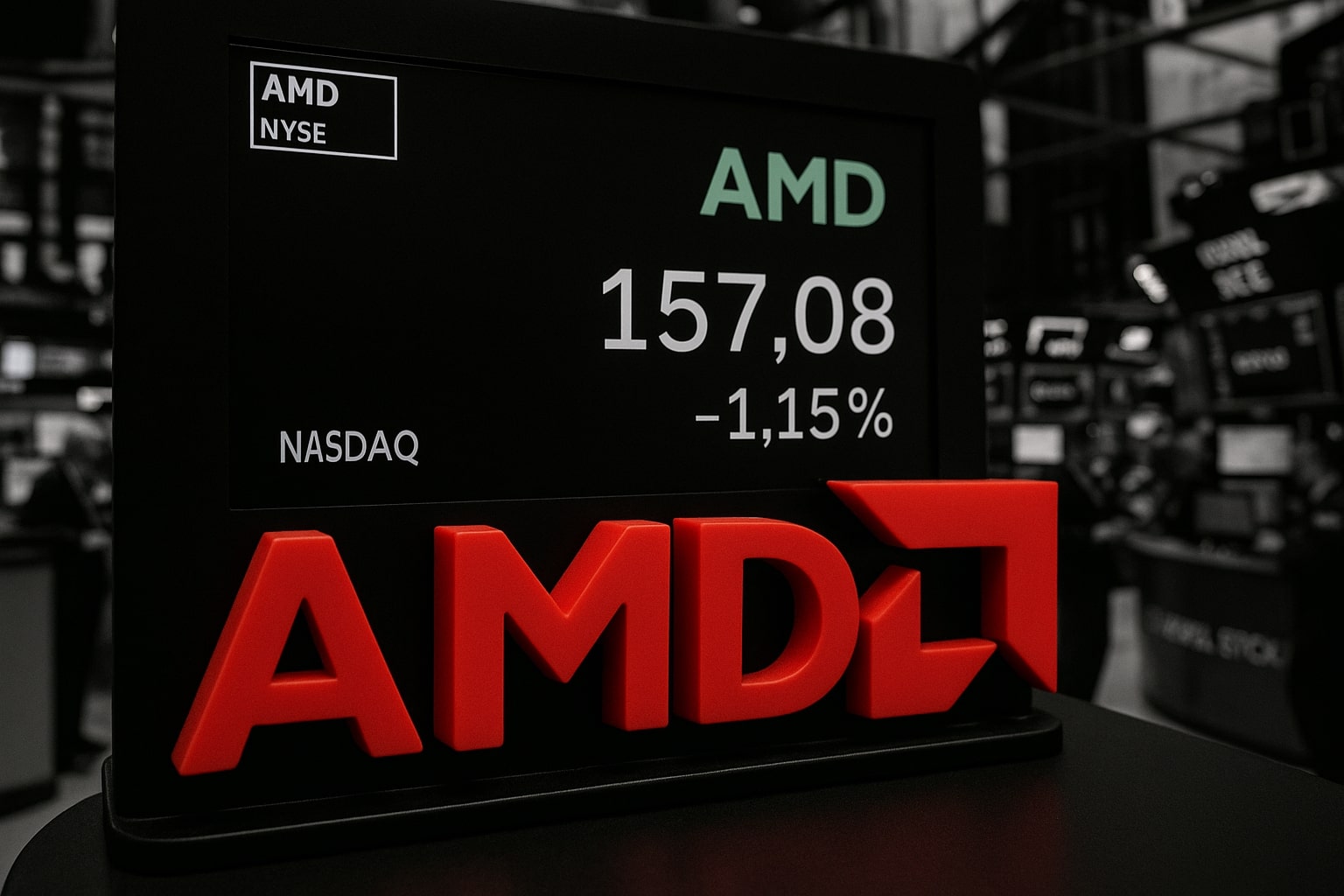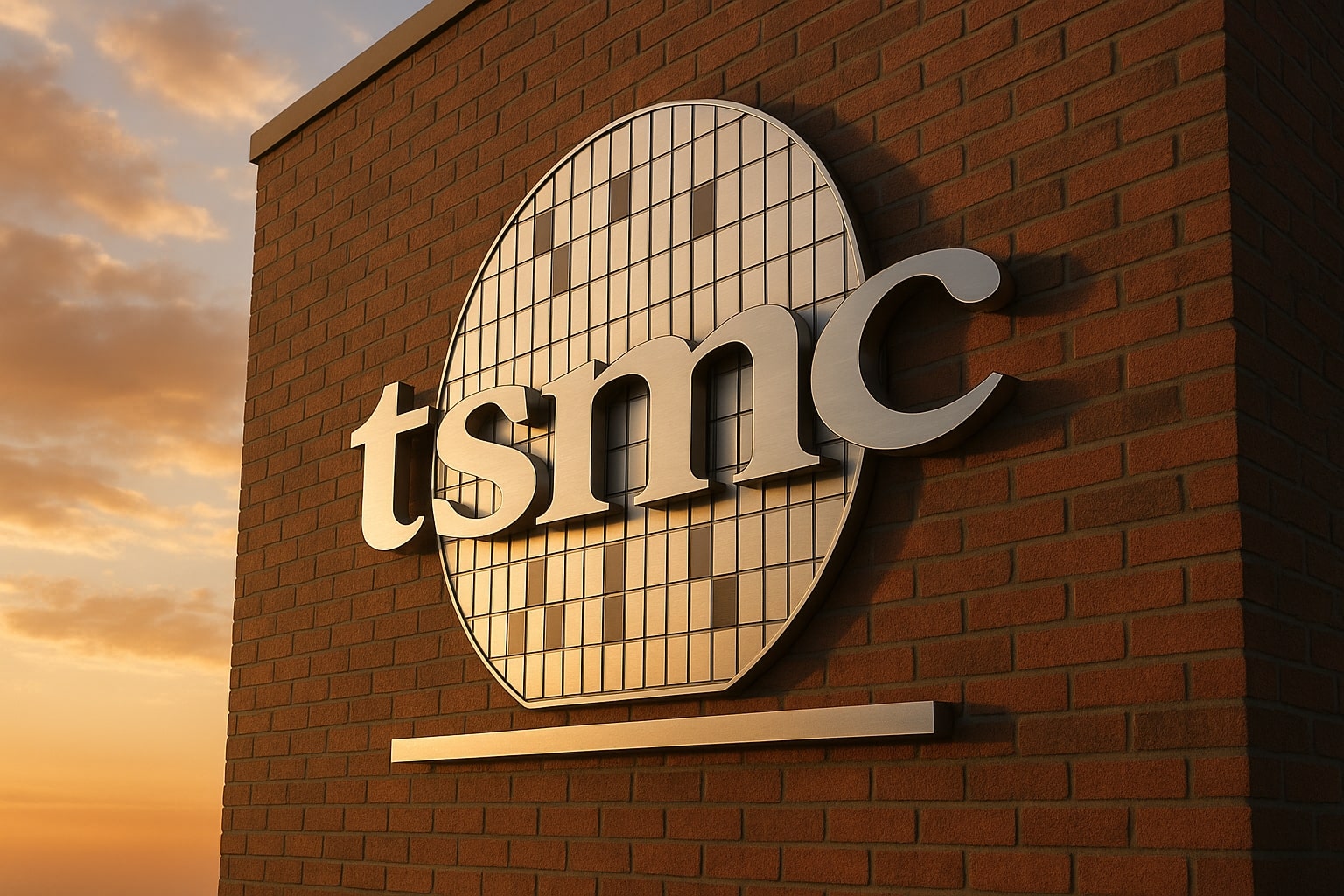
AMD Stock Price Forecast - AMD Skyrockets 75% YTD as OpenAI Deal Unlocks Tens of Billions in AI Revenue
AMD stock surges to $211.51 after sealing a game-changing AI chip partnership with OpenAI, granting up to 10% equity and guaranteeing multi-year demand for Instinct GPUs | That's TradingNEWS
Advanced Micro Devices (NASDAQ:AMD) Surges 75% YTD as OpenAI Deal Redefines the AI Hardware Landscape
Advanced Micro Devices (NASDAQ:AMD) has entered a new era of market dominance, cementing itself as the first credible challenger to NVIDIA’s $4.5 trillion AI leadership. Trading at $211.51, up 3.83% in the latest session, AMD’s valuation now stands at $343.2 billion, with investors recalibrating expectations following the groundbreaking multi-year partnership with OpenAI. This agreement, valued in the tens of billions of dollars, instantly repositions AMD from an AI alternative to a structural leader in global compute infrastructure.
OpenAI Partnership: The Turning Point That May Add Tens of Billions to Annual Revenue
The deal between AMD and OpenAI, announced in early October, is one of the most consequential in semiconductor history. OpenAI agreed to source 6 gigawatts of AMD Instinct GPUs for its next-generation AI infrastructure—beginning with a 1 GW deployment in H2 2026 powered by the MI450 series. What makes this agreement unique is the embedded equity structure: OpenAI was granted warrants allowing it to acquire up to 160 million AMD shares, potentially owning 10% of the company if performance milestones are met.
This structure creates an unparalleled alignment of incentives. AMD gains guaranteed multi-year demand visibility for its AI chips, while OpenAI secures access to high-performance GPUs at scale without immediate capital strain. Analysts estimate the deal could contribute $10–$15 billion annually to AMD’s top line once fully operational, potentially doubling current data center revenues. The market’s reaction—a 30%+ single-day surge—underscored the strategic and financial weight of this partnership.
AI Infrastructure Expansion: AMD Captures Tier-One Hyperscaler Demand
The OpenAI alliance adds to an already expanding roster of top-tier clients. Meta Platforms (NASDAQ:META) reportedly purchased 173,000 MI300 GPUs in 2024, giving AMD over 40% share of Meta’s total AI hardware purchases. Microsoft (NASDAQ:MSFT) followed with 96,000 units, while Oracle (NYSE:ORCL) and Amazon (NASDAQ:AMZN) have integrated AMD accelerators across data centers to diversify away from NVIDIA dependency.
This diversification of demand is reshaping AMD’s growth curve. In Q2 2025, data center revenue hit $3.2 billion, up 31% YoY, while total quarterly revenue climbed from $5.8B to $7.7B (+32%), driven by surging Ryzen and EPYC chip sales. Compared to NVIDIA’s $41.1 billion data center revenue in the same quarter, AMD’s share remains small, but its potential is exponential. Even capturing 25% of NVIDIA’s volume would lift AMD’s data center revenue by over 300%, unlocking over $12 billion per quarter.
Technological Leap: The MI300-to-MI450 Roadmap Outpaces Expectations
AMD’s growth isn’t just financial—it’s architectural. The company’s multi-generational GPU roadmap now includes the MI300, MI325, MI355, and MI450 series, mirroring the cadence of its CPU success that dethroned Intel. The MI450 architecture, described internally as the “no asterisk generation,” is engineered for full AI training and inference at hyperscale, delivering unified memory bandwidth and rack-scale scalability.
Each iteration expands AMD’s total addressable market (TAM) across AI, cloud, and edge computing. The company forecasts a $500 billion TAM by 2028, compared to just $30 billion in current trailing 12-month revenue, a projection underpinned by its rapid integration into high-performance computing and data center ecosystems.
AMD’s Helios platform extends its reach beyond chips into rack-level and cluster-scale systems, a shift from component supplier to full infrastructure partner. This transformation increases margins, reduces client switching risk, and strengthens its position in the $1 trillion AI infrastructure race.
Leadership Endorsement and Execution Edge
CEO Lisa Su has been unequivocal about AMD’s strategy. In recent remarks following the OpenAI deal, she dismissed AI skepticism, stating, “Critics are thinking too small. The scale of this opportunity is measured in trillions, not billions.” Her execution track record supports that vision. From 2018 to 2025, AMD’s CPU market share grew from 0% to 41%, while revenue expanded from $6.7 billion to nearly $30 billion.
This operational discipline has reduced what analysts term AMD’s “execution discount.” The market now prices AMD with confidence in delivery, supported by an EPS growth rate 3x higher than the tech sector median. That growth justifies the current forward P/E of 52.21, even at a price-to-sales ratio of 9.36, far above Intel’s 3.2 or NVIDIA’s 12.1.
Read More
-
VOO ETF Hits $630 as Fed Shift and AI Growth Power 2026 Rally Toward $700
07.12.2025 · TradingNEWS ArchiveStocks
-
XRP ETFs XRPI & XRPR Aim for $1B Inflows as XRP Holds $2.02 Support
07.12.2025 · TradingNEWS ArchiveCrypto
-
Natural Gas Price (NG=F) Rallies to $5.29, Freezing Temperatures Spark Bullish Breakout
07.12.2025 · TradingNEWS ArchiveCommodities
-
USD/JPY Price Forecast - Dollar Extends Slide to 154 as BoJ Hawkish Pivot Drive Yen Toward 150
07.12.2025 · TradingNEWS ArchiveForex
Financial Momentum: High-Growth Story with Expanding Margins
The fundamentals back the narrative. AMD’s net income has surged to $2.73 billion, with a profit margin of 9.57%, return on equity at 4.7%, and operating cash flow of $4.88 billion. Gross profit sits at $15.09 billion, reflecting expanding yields from its EPYC server chips and GPU accelerators.
The levered free cash flow of $2.33 billion and a total cash position of $5.87 billion provide flexibility for aggressive R&D and potential buybacks. AMD maintains a low debt-to-equity ratio of just 6.5%, emphasizing a fortress balance sheet even as it scales capital-intensive production.
Valuation metrics reinforce the bullish thesis:
-
Forward P/E: 28.57 (down from 38 at start of 2025)
-
PEG Ratio: 0.52 (vs tech median of 1.83)
-
Quarterly EPS Growth: +229% YoY
-
Quarterly Revenue Growth: +31.7% YoY
These figures indicate AMD is growing at triple the pace of peers while maintaining disciplined cost structures.
Market Performance: AMD Outpaces S&P 500 and Reclaims Investor Confidence
In 2025, AMD has delivered 75.11% YTD returns, far exceeding the S&P 500’s 14.16%. Its three-year return of 261.9% showcases sustained momentum driven by AI catalysts and strategic execution. Shares hit a 52-week high of $226.71, up from a low of $76.48, marking a 196% rebound from April 2025 lows when sentiment was at its weakest.
Average daily trading volume now exceeds 56.7 million shares, highlighting institutional participation. Institutions hold 69.3% of total shares, while short interest remains low at 2.57%, indicating market confidence.
AI Pricing Power: MI350 and MI400 Chips Command Record Demand
AMD’s pricing strategy confirms market traction. In late July 2025, the company raised MI350 chip prices from $15,000 to $25,000, a 67% increase, reflecting surging demand and constrained supply. The MI350 delivers 4x compute and 35x inference performance gains over the MI300, directly competing with NVIDIA’s Blackwell B200 chips.
While NVIDIA remains dominant in throughput, AMD’s advantage in memory capacity and bandwidth positions it favorably for large-language-model training, where these metrics are increasingly critical. Analysts forecast MI350 revenue growth to appear prominently in Q3 and Q4 2025 results, ahead of MI400’s commercial rollout in mid-2026.
AI Market Context: AMD Poised to Capture Overflow Demand from NVIDIA
AI infrastructure demand continues to exceed NVIDIA’s supply capacity. Hyperscalers—Microsoft, Amazon, Meta, and OpenAI—are expanding data centers at unprecedented rates, driving GPU shortages across the sector. AMD’s entrance into rack-scale GPU delivery gives it a natural advantage: it doesn’t need to “steal” NVIDIA’s market share—just to fill unmet demand.
The ZT Systems acquisition in March 2025 bolstered AMD’s data center integration capabilities, allowing it to deliver complete AI racks comparable to NVIDIA’s DGX systems but with higher memory bandwidth efficiency. This makes AMD an appealing option for institutions seeking to diversify hardware sources without sacrificing performance.
Technical Outlook: Chart Patterns Indicate Breakout Continuation
Technically, AMD trades in a well-defined ascending channel that began after the April 2025 bottom near $120. Current resistance at $226 corresponds to the post-announcement high, while support rests near $205, coinciding with its 50-day moving average. The 200-day moving average of $128 remains far below current levels, affirming a strong uptrend.
RSI levels hover around 62, showing moderate overbought momentum, yet price action remains constructive. Analysts project a breakout toward $250–$260 in the near term if the $226 barrier clears on volume above 70 million shares daily.
Leadership and Insider Dynamics
Executive confidence remains strong. According to AMD insider transaction data, there have been no major sales from senior management since the OpenAI announcement, signaling conviction in the long-term trajectory. CEO Lisa Su continues to accumulate performance-based stock awards tied to data center revenue milestones and share price thresholds above $250.
Institutional activity reinforces that optimism. Major holders include Vanguard Group (8.1%), BlackRock (7.3%), and State Street (4.2%), all of whom have expanded their positions in Q3 2025 filings.
Valuation Outlook and Competitive Positioning
AMD’s current forward PEG of 0.52 suggests the market is undervaluing its growth trajectory relative to earnings acceleration. Even after a 211% 12-month price move, the company’s valuation multiples remain attractive compared to peers when adjusting for growth.
In contrast, NVIDIA’s P/E exceeds 85x, while Intel trades at just 22x but faces stagnation in AI relevance. AMD, with its diversified architecture, sits at the sweet spot—offering scalability without legacy baggage.
Risks: Execution Complexity and Supply Constraints
The primary risk lies in execution at scale. Delivering rack-level infrastructure adds mechanical and software complexity. Even minor missteps—thermal issues, networking latencies, or system instability—could slow adoption among hyperscalers accustomed to NVIDIA’s reliability.
However, AMD’s recent operational precision mitigates much of this risk. The company’s 2.49 current ratio and low leverage allow it to absorb potential cost overruns without balance sheet pressure.
AMD’s Strategic Path Forward: From Challenger to Co-Leader
AMD’s trajectory suggests it is no longer a secondary AI player—it’s emerging as the second pillar of global AI infrastructure. With OpenAI, Meta, and Microsoft as anchor clients, a visible $500B TAM, and product cycles that directly parallel NVIDIA’s, AMD is on course to reach $300–$350 per share within 12–18 months, assuming consistent data center expansion and continued execution on MI400 development.
The deal with OpenAI redefines the semiconductor balance of power. It aligns the company with the most influential AI lab globally while transforming AMD into both a supplier and equity partner.
Verdict: Strong Buy — AMD Positioned for a $350 Long-Term Target
Based on valuation metrics, earnings momentum, product pipeline, and structural AI positioning, Advanced Micro Devices (NASDAQ:AMD) is rated Strong Buy. The short-term technical ceiling sits near $226, with medium-term potential toward $300, and a long-term projection of $350–$375 as the OpenAI contract revenue is realized from 2026 onward.
AMD’s evolution from underdog to essential infrastructure supplier mirrors NVIDIA’s early 2016 inflection point. The combination of institutional accumulation, insider confidence, strong financials, and AI-driven demand creates one of the most compelling large-cap growth stories in the market today.


















